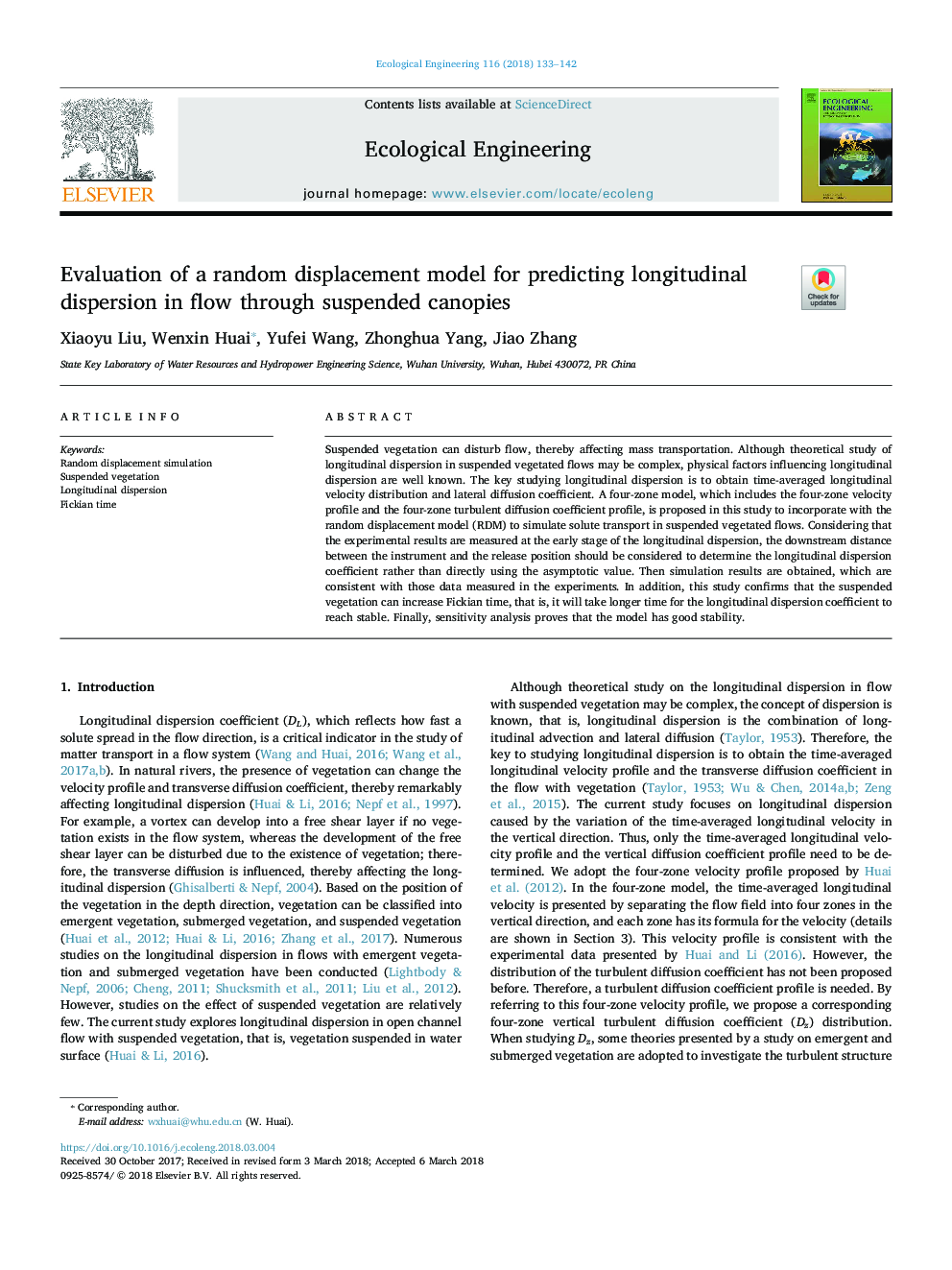| Article ID | Journal | Published Year | Pages | File Type |
|---|---|---|---|---|
| 8847922 | Ecological Engineering | 2018 | 10 Pages |
Abstract
Suspended vegetation can disturb flow, thereby affecting mass transportation. Although theoretical study of longitudinal dispersion in suspended vegetated flows may be complex, physical factors influencing longitudinal dispersion are well known. The key studying longitudinal dispersion is to obtain time-averaged longitudinal velocity distribution and lateral diffusion coefficient. A four-zone model, which includes the four-zone velocity profile and the four-zone turbulent diffusion coefficient profile, is proposed in this study to incorporate with the random displacement model (RDM) to simulate solute transport in suspended vegetated flows. Considering that the experimental results are measured at the early stage of the longitudinal dispersion, the downstream distance between the instrument and the release position should be considered to determine the longitudinal dispersion coefficient rather than directly using the asymptotic value. Then simulation results are obtained, which are consistent with those data measured in the experiments. In addition, this study confirms that the suspended vegetation can increase Fickian time, that is, it will take longer time for the longitudinal dispersion coefficient to reach stable. Finally, sensitivity analysis proves that the model has good stability.
Keywords
Related Topics
Life Sciences
Agricultural and Biological Sciences
Ecology, Evolution, Behavior and Systematics
Authors
Xiaoyu Liu, Wenxin Huai, Yufei Wang, Zhonghua Yang, Jiao Zhang,
